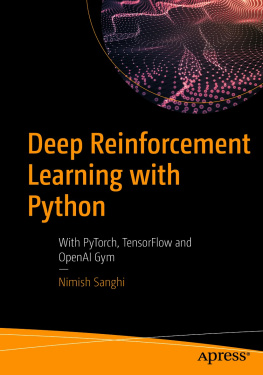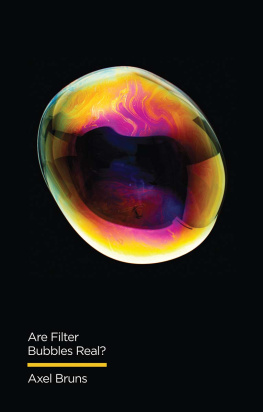Weiwei Xing , Weibin Liu , Jun Wang , Shunli Zhang , Lihui Wang , Yuxiang Yang and Bowen Song
Visual Object Tracking from Correlation Filter to Deep Learning
1st ed. 2021

Logo of the publisher
Weiwei Xing
School of Software Engineering, Beijing Jiaotong University, Beijing, China
Weibin Liu
Institute of Information Science, Beijing Jiaotong University, Beijing, China
Jun Wang
College of Electronic Information Engineering, Hebei University, Baoding, Hebei, China
Shunli Zhang
School of Software Engineering, Beijing Jiaotong University, Beijing, China
Lihui Wang
Department of Information and Communication, Army Academy of Armored Forces Academy, Beijing, China
Yuxiang Yang
School of Software Engineering, Beijing Jiaotong University, Beijing, China
Bowen Song
School of Software Engineering, Beijing Jiaotong University, Beijing, China
ISBN 978-981-16-6241-6 e-ISBN 978-981-16-6242-3
https://doi.org/10.1007/978-981-16-6242-3
The Editor(s) (if applicable) and The Author(s), under exclusive license to Springer Nature Singapore Pte Ltd. 2021
This work is subject to copyright. All rights are solely and exclusively licensed by the Publisher, whether the whole or part of the material is concerned, specifically the rights of translation, reprinting, reuse of illustrations, recitation, broadcasting, reproduction on microfilms or in any other physical way, and transmission or information storage and retrieval, electronic adaptation, computer software, or by similar or dissimilar methodology now known or hereafter developed.
The use of general descriptive names, registered names, trademarks, service marks, etc. in this publication does not imply, even in the absence of a specific statement, that such names are exempt from the relevant protective laws and regulations and therefore free for general use.
The publisher, the authors and the editors are safe to assume that the advice and information in this book are believed to be true and accurate at the date of publication. Neither the publisher nor the authors or the editors give a warranty, expressed or implied, with respect to the material contained herein or for any errors or omissions that may have been made. The publisher remains neutral with regard to jurisdictional claims in published maps and institutional affiliations.
This Springer imprint is published by the registered company Springer Nature Singapore Pte Ltd.
The registered company address is: 152 Beach Road, #21-01/04 Gateway East, Singapore 189721, Singapore
Preface
This book introduces some representative trackers through practical algorithm analysis and experimental evaluations. This book is intended for professionals and researchers interested in visual object tracking, and also can be used as a reference book by students. Readers will get comprehensive knowledge of tracking and can learn state-of-the-art methods through this content. In general, this book is organized as follows:
Chapter summarizes our work and points out the potential future research directions for visual object tracking in appearance model construction and update.
Weiwei Xing
Beijing, China
June 2021
Acknowledgements
First of all, we would like to thank every one of the collaborators who worked tirelessly together and contributed to producing this monograph. We would also like to thank the organizers of visual tracking benchmarks for providing large-scale datasets to evaluate the trackers comprehensively. We would highly appreciate the help and assistance of the current and graduated students in our research group during the production of this book. In particular, we wish to thank Mr. Xinjie Wang, Mr. Menglei Jin, and Mr. Jiayi Yin for their time and efforts in providing materials and reviewing for revising the entire book and Mr. Hui Wang, Ms. Huaqing Hao, Mr. Yanhao Cheng, Ms. Yuxin Wang, and Mr. Yang Pei for improving the individual chapters of this monograph. We also want to especially thank the editor of Springer, Jing Dou, for her patience, support, guidance, and editorial assistance in the course of the preparation of this work. Part of the content in this book is based on the work supported by the National Natural Science Foundation of China under Nos. 61876018 and 61976017 and the Beijing Natural Science Foundation under No. 4212025.
This monograph, especially those proposed object tracking algorithms in Chaps. , is mainly prepared based on the following research papers of our group. We would like to give a special acknowledgement to all the authors for their contributions and to the related publishing organizations for their permission to use these materials. The referenced papers are as follows:
Jin, M.L., Liu, W.B., Xing, W.W.: A robust visual tracker based on DCF algorithm. International Journal of Software Engineering and Knowledge Engineering, 29(11n12):18191834 (2019)
Jin, M.L., Liu, W.B., Xing, W.W.: A robust Correlation Filter based tracker with rich representation and a relocation component. KSII Transactions on Internet and Information Systems, 13(10): 51615178 (2019)
Wang, J., Liu, W.B., Xing, W.W., Zhang, S.L.: Visual object tracking with multi-scale superpixels and color-feature guided Kernelized Correlation Filters. Signal Processing: Image Communication, 63: 4462 (2018)
Yang, Y.X, Xing, W.W., Zhang, S.L., et al.: Visual tracking with long-short term based Correlation Filter. IEEE Access, 8, 2025720269 (2020)
Wang, J., Liu, W.B., Xing, W.W.: Discriminative context-aware Correlation Filter network for visual tracking. In: Intelligent Systems and Applications. Advances in Intelligent Systems and Computing, 1250, pp.724736 (2020)
Wang, J., Liu, W.B., Xing, W.W., Wang, L.Q., Zhang, S.L.: Attention shake siamese network with auxiliary relocation branch for visual object tracking. Neurocomputing, 400, 5372 (2020)
Yang, Y.X, Xing, W.W., Zhang, S.L., et al.: A learning frequency-aware feature siamese network for real-time visual tracking. Electronics, 9(5):854 (2020)
Song, B.W., Lu, W., Xing, W.W., Xiang, W.: Real-time object tracking based on improved adversarial learning. In: IEEE International Conference on Systems, Man, and Cybernetics (SMC), pp. 35763581 (2020)
Yang, Y.X, Xing, W.W., Wang, D.D., Zhang, S.L., et al.: AEVRNet: Adaptive exploration network with variance reduced optimization for visual tracking. Neurocomputing, 449, 4860 (2021)












